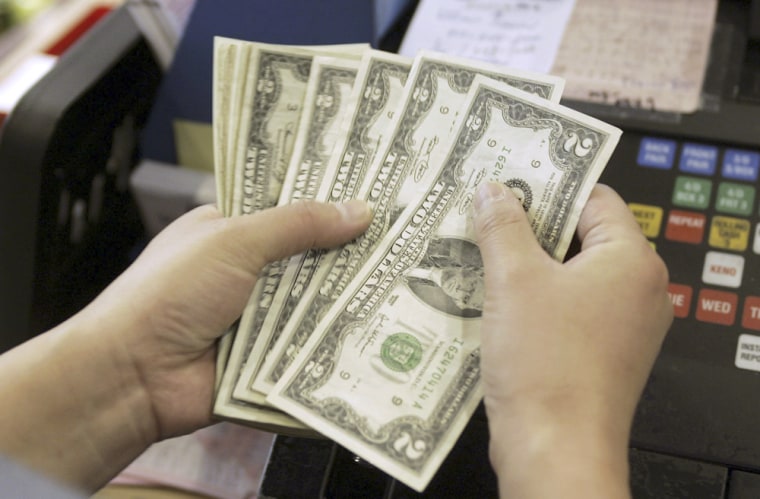America's little-used $2 bill, which occasionally turns up in birthday cards and souvenir drawers, is on a roll.
From Mom-and-Pop retailers to strip club owners, the bill is shedding its play-money image and turning up in more and more wallets.
In 2005, depository institutions ordered $122 million in $2 notes, according to Federal Reserve statistics. That is more than double the average amount ordered from 1991 to 2000.
"We noticed the increase in demand beginning in 2001," said Michael Lambert, assistant director for cash at the Federal Reserve. That year, banks ordered $92 million in $2 notes and ever since, the orders have grown.
Much to the puzzlement of foreign coin fanatics and domestic experts, the U.S. $1 bill remains far more popular, even though it's more likely to clog a wallet.
At year-end 2005, there were $8.6 billion $1 notes in circulation, and $3.26 billion in $1 coins, federal statistics show.
Still, $2 bill usage is increasing, with banking and currency experts not exactly sure about what is fueling the surge. A few possibilities are inflation, the introduction of Sacagawea $1 coin in 2000, and even, according to some, immigration.
Regardless of the reason, anecdotal evidence shows that at the local level, vendors and customers are getting more comfortable with $2 bills.
One group that has embraced the note is the exotic dancing industry. Strip clubs hand out $2 bills when they give customers their change and the bills end up in dancers' garters and bartenders' tip jars.
"The entertainers love it because it doubles their tip money," said Angelina Spencer, a former stripper and the current executive director of the Association of Club Executives, an adult nightclub trade group representing some 1,000 members.
Wine store owner Bruce Gibson is also a big fan of the $2 note. The rarity of getting the bills helps new customers remember his place, he said, and helps market the shop when customers spend them later.
"The government actually pays for my advertising. Where else can I find that?" Gibson asked, speaking at the Harwich Spirits Shoppe, in Harwich, Massachusetts. When customers ask him where he gets the bills, Gibson jokes that he prints them in the back of the shop.
The bill, with a picture of Thomas Jefferson on the front, is in fact printed by the government. As a currency unit it dates back to 1776, with various reprintings along the way.
In addition to the inflation factor, Robert Hoge, curator of North American coins and currency at the American Numismatics Society, thinks $2 bill demand may be getting help from immigration flows, particularly from Canada and Europe where currency denominated in twos are common.
Peter Morici, professor at the Robert H. Smith School of Business at the University of Maryland, believes that with the introduction of the Sacagawea, named for a famous Indian woman, people are beginning to realize that inconvenience of $1 bills.
"In order to have a successful $2 bill you have to have a successful $1 coin," he said.
